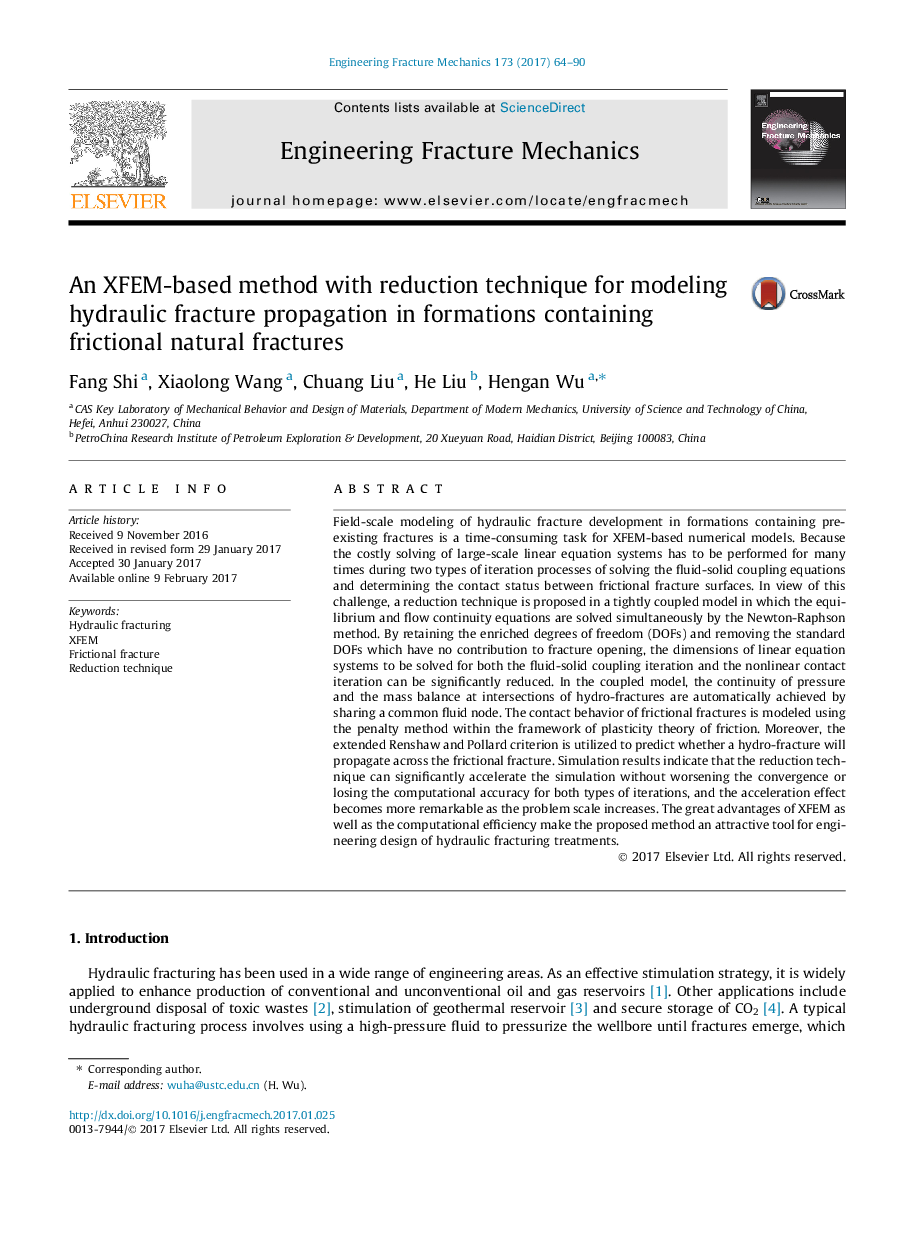| کد مقاله | کد نشریه | سال انتشار | مقاله انگلیسی | نسخه تمام متن |
|---|---|---|---|---|
| 5013975 | 1463056 | 2017 | 27 صفحه PDF | دانلود رایگان |
عنوان انگلیسی مقاله ISI
An XFEM-based method with reduction technique for modeling hydraulic fracture propagation in formations containing frictional natural fractures
دانلود مقاله + سفارش ترجمه
دانلود مقاله ISI انگلیسی
رایگان برای ایرانیان
موضوعات مرتبط
مهندسی و علوم پایه
سایر رشته های مهندسی
مهندسی مکانیک
پیش نمایش صفحه اول مقاله

چکیده انگلیسی
Field-scale modeling of hydraulic fracture development in formations containing pre-existing fractures is a time-consuming task for XFEM-based numerical models. Because the costly solving of large-scale linear equation systems has to be performed for many times during two types of iteration processes of solving the fluid-solid coupling equations and determining the contact status between frictional fracture surfaces. In view of this challenge, a reduction technique is proposed in a tightly coupled model in which the equilibrium and flow continuity equations are solved simultaneously by the Newton-Raphson method. By retaining the enriched degrees of freedom (DOFs) and removing the standard DOFs which have no contribution to fracture opening, the dimensions of linear equation systems to be solved for both the fluid-solid coupling iteration and the nonlinear contact iteration can be significantly reduced. In the coupled model, the continuity of pressure and the mass balance at intersections of hydro-fractures are automatically achieved by sharing a common fluid node. The contact behavior of frictional fractures is modeled using the penalty method within the framework of plasticity theory of friction. Moreover, the extended Renshaw and Pollard criterion is utilized to predict whether a hydro-fracture will propagate across the frictional fracture. Simulation results indicate that the reduction technique can significantly accelerate the simulation without worsening the convergence or losing the computational accuracy for both types of iterations, and the acceleration effect becomes more remarkable as the problem scale increases. The great advantages of XFEM as well as the computational efficiency make the proposed method an attractive tool for engineering design of hydraulic fracturing treatments.
ناشر
Database: Elsevier - ScienceDirect (ساینس دایرکت)
Journal: Engineering Fracture Mechanics - Volume 173, 15 March 2017, Pages 64-90
Journal: Engineering Fracture Mechanics - Volume 173, 15 March 2017, Pages 64-90
نویسندگان
Fang Shi, Xiaolong Wang, Chuang Liu, He Liu, Hengan Wu,